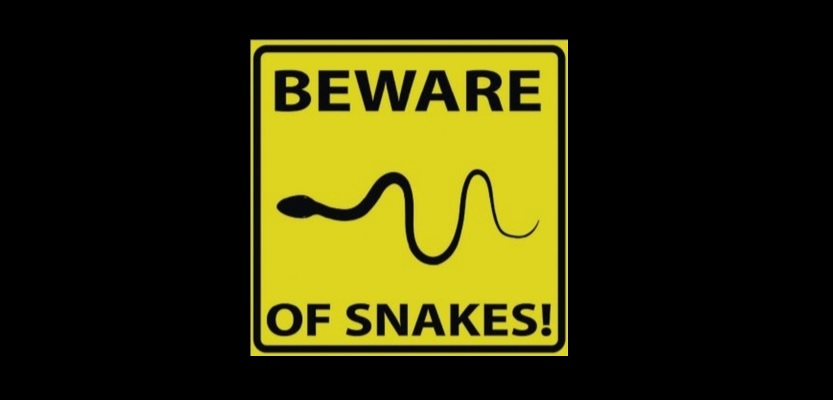Any surveyor who has spent more than a few days in the field knows insects, reptiles, and other critters that exist in the wild can ruin your day. Yellowjackets and other stinging bees are some of the more common causes of pain for surveyors in the eastern United States, but venomous snakes are the critters we worry most about encountering.
I think it’s safe to say that most of us want to avoid potential deadly snakes like the Eastern Copperhead and the Timber Rattlesnake, but one of my early party chiefs had a desire to see one in the field.
While I was working as a rodman/chainman at the Hagerstown, Maryland, firm of Fox & Associates in 1980, my crew was assigned to survey a large mountainous tract of land for the Maryland Department of General Services. The state was actively buying tracts of land that were adjacent to the Appalachian Trail to keep that land preserved.
This particular tract encompassed a geological feature on the western slope of South Mountain known as Black Rock. The rock field can be seen by motorists traveling east on Interstate 70 between Hagerstown and Frederick, Maryland, by looking to the left as they start the approach to South Mountain.
The first day that we worked on this survey, we drove to the foot of the mountain and started our reconnaissance, which soon led our three-man crew up and over the face of these car-sized rocks that covered about seven acres. As we scaled the rocks and handed the transit up and over each one, we knew this was going to be a difficult survey.
I began to think about snakes sunning themselves on the rocks and mentioned my trepidation to my party chief, Mike Sanders. Mike got a big grin on his face and said, “I hope we get to see a rattlesnake up here. I’ve never seen one in the wild.”
Throughout the survey, I kept thinking that Mike’s words were going to come back to haunt him, but the only snakes we encountered were the innocuous black rat snake and the garter snake as we traversed the 100 or so acres of mountain ground over the next several weeks.
When the boundary computations were completed and there were property corners to be set, we went back into the mountains to set steel pipe for corners. We were cutting line through the mountain laurel to set the last corner of the whole job when Mike got his wish.
I was swinging a brush hook as the instrument man, Dudley, kept me online. Mike told me to step aside as he pulled the 300-foot drag chain past me to see how close we were to the prescribed stakeout distance. Mike was only 20 feet past me when he jumped, let out a guttural vocalization, and ran back past me. He sputtered a bit and then managed to say, “Rattlesnake.”
I asked, “Did you see it?” He replied, “No, but I know what they sound like.”
That brought Dudley hurrying along with an ax in his hands. He said, “Let me get him.” I went along for support with my brush hook. Dudley saw it and took a chop with the ax; it came toward me and I took a swipe with the brush hook, then Dudley delivered the “coup de grace” by chopping the head off of the snake. I turned to Mike and said, “I hope you’re happy now, we got to see a rattlesnake as you wanted!”
We had a little fun with it when we returned to the office by putting the dead snake in a paper lunch bag and carrying it into the boss’s office and setting it on the desk; telling him that he almost got us killed by sending us up on that mountain. He looked at us quizzically and asked, ‘What’s this?” Mike picked it up and shook it so that he could hear the rattles. He jumped and said, “Get that out of here.”
Very few people die as a result of snakebites in the United States, although the bite from a timber rattlesnake is reported to be very painful. I don’t condone the killing of rattlesnakes, and I know that they can only be harvested in certain areas with proper permits, but I would advise anyone who works outdoors, including surveyors, to avoid them and don’t wish for a close encounter that could turn deadly.

